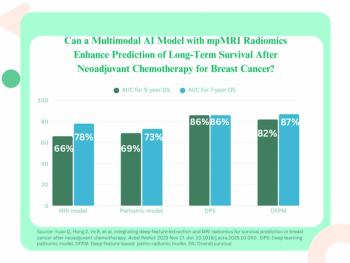
MultiHance outperforms Omniscan for enhancement of brain tumors
Although both gadobenate dimeglumine and gadodiamide are gadolinium-based agents, the former provides more conspicuous enhancement for imaging of brain lesions, according to results from an international multicenter trial. Findings could lead to further improvements in the management of these patients.
Although both gadobenate dimeglumine and gadodiamide are gadolinium-based agents, the former provides more conspicuous enhancement for imaging of brain lesions, according to results from an international multicenter trial. Findings could lead to further improvements in the management of these patients.
Neuroradiologists routinely perform MR imaging of central nervous system tumors using one of five gadolinium-based contrast agents approved by the FDA. These agents involve different chelating mechanisms around their gadolinium cores, but they share the ability to enhance areas of tumor activity. Accurate detection and characterization of these lesions guides patient management. This includes surgical guidance, delineation of proper target volumes for radiotherapy, and recurrence control.
Two of these agents - gadobenate dimeglumine (MultiHance, manufactured by Bracco Diagnostics) and gadodiamide (Omniscan, manufactured by GE Healthcare) - have shown similar properties at different dosages in several studies. A multicenter clinical comparison, coordinated by Dr. Howard A. Rowley, director of neuroradiology at the University of Wisconsin-Madison, and funded through a grant from Bracco, found that MultiHance provides more useful information for overall diagnosis and follow-up of brain tumors than Omniscan,
"By studying these drugs properly, we showed that not all agents are alike, that some of them do have slightly different properties, in this case significantly different properties for brain tumor applications," Rowley told Diagnostic Imaging.
Rowley and colleagues in Europe, China, and the U.S. prospectively enrolled 138 patients from May 2006 through February 2007. Of these, 113 successfully underwent 1.5T MR scanning after randomized injection of 0.1 mmol/kg doses of gadobenate dimeglumine or gadodiamide. Three experienced neuroradiologists interpreted results blindly.
The investigators found that gadobenate dimeglumine provided significantly greater lesion enhancement and diagnostic information compared with an equivalent dose of gadodiamide. They published results in the July 3 issue of the American Journal of Neuroradiology.
"This study came along at a time when many radiology practices were reevaluating gadolinium use in general, particularly with the concern for nephrogenic systemic fibrosis," Rowley said.
All FDA-approved agents accumulate briefly in areas with an abnormal blood-brain barrier, producing the desired enhancement. Gadobenate dimeglumine's molecular structure contains a "fat-seeking" peptide chain that allows for transient weak interaction, higher contrast-to-noise signal ratios, and thus higher T1-weighted relaxation times, Rowley said.
"We conclusively showed that MultiHance shows more enhancement and more enhancement characteristics than Omniscan," he said.
Researchers did not study how these findings translate into specific patient management or other clinical practice issues. Future studies should address these questions, Rowley said.
For more information from the Diagnostic Imaging archives:
Newsletter
Stay at the forefront of radiology with the Diagnostic Imaging newsletter, delivering the latest news, clinical insights, and imaging advancements for today’s radiologists.




























